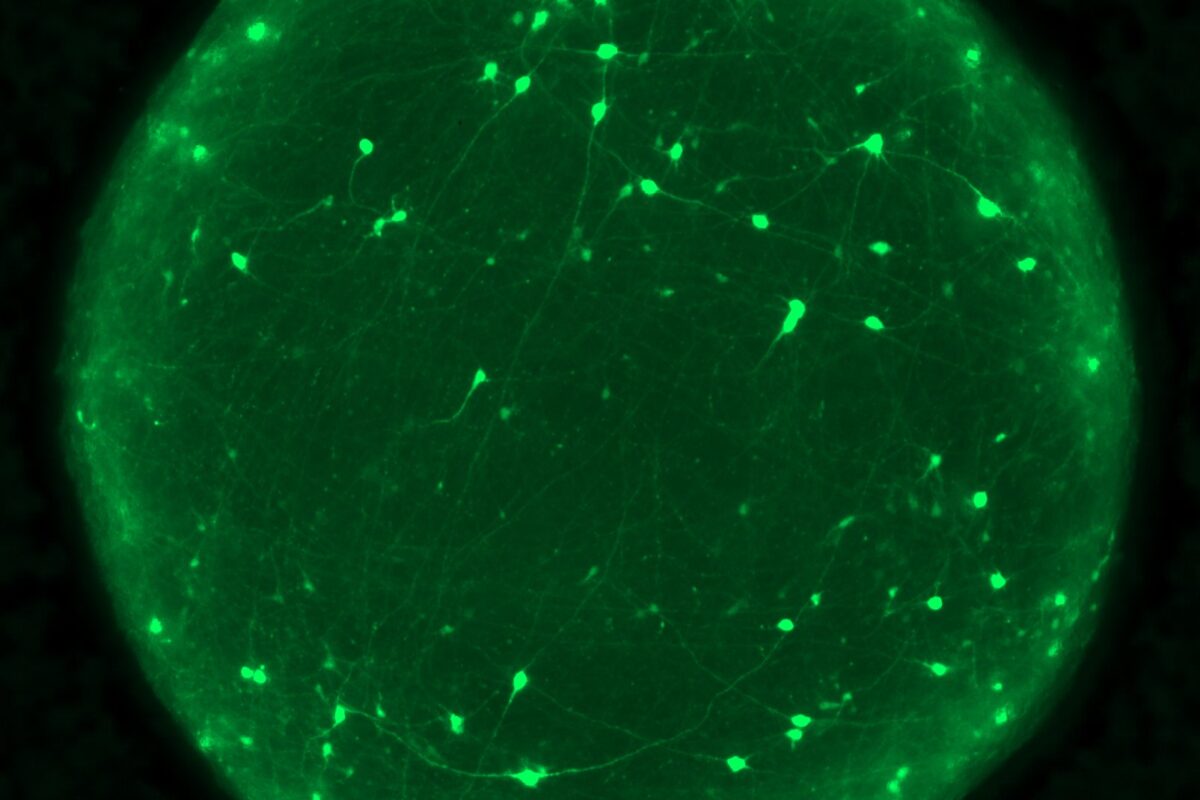
A traumatic brain injury (TBI) can quadruple your risk for developing dementia, and also increase your chances of developing neurodegenerative diseases such as ALS. In a new study published in Cell Stem Cell, USC scientists use lab-grown human brain structures known as organoids to offer insights into why this is the case and how to mitigate the risk.
In the study, former postdoc Jesse Lai and postdoc Joshua Berlind from the USC Stem Cell laboratory of Justin Ichida used human patient-derived stem cells to grow rudimentary brain structures known as organoids in the lab. They then injured these organoids with high-intensity ultrasound waves.
The injured organoids showed some of the same features seen in TBI patients, including nerve cell death and pathological changes in tau proteins, as well as in a protein called TDP-43.
The scientists found that the pathological changes in TDP-43 were more prevalent in organoids derived from patients with ALS or frontotemporal dementia, making their nerve cells more susceptible to dysfunction and death following injury. This suggests that TBI might increase the risk of developing these diseases even more for patients with a genetic predisposition. The worst injuries were sustained by nerve cells that share information—called excitatory neurons—located in the deep layers of the organoids.
In their search for ways to protect these neurons against the effects TBI, the scientists identified a gene called KCNJ2, which contains instructions for making channels that selectively allow potassium to pass through the cell membrane, helping enable muscle contraction and relaxation. Inhibiting this gene had a protective effect on organoids derived from patients with and without ALS, as well as on mice, following a TBI.
“Targeting KCNJ2 may reduce the death of nerve cells after TBI,” said Ichida, who is the John Douglas French Alzheimer’s Foundation Associate Professor of Stem Cell Biology and Regenerative Medicine at USC, and a principal investigator at the Eli and Edythe Broad Center for Regenerative Medicine and Stem Cell Research at USC. “This could have potential as either a post-injury treatment or as a prophylactic for athletes and others at high risk for TBI.”
About the authors and the study
Co-corresponding author Ichida is also a co-founder of AcuraStem and Modulo Bio, a Scientific Advisory Board (SAB) member at Spinogenix and Vesalius Therapeutics, and an employee in the Research and Early Development group at BioMarin Pharmaceutical. Co-corresponding author Lai and co-author Violeta Yu were both employees of Amgen during the study, and currently work at Dewpoint Therapeutics. Named companies were not involved in this research project.
First author Berlind is a PhD student in the Ichida Lab. Additional co-authors are Gabriella Fricklas, Cecilia Lie, Jean-Paul Urenda, Kelsey Lam, Naomi Sta Maria, Russell Jacobs, and Zhen Zhao from USC.
Fifty percent of the work was supported by federal funding from the National Institute of Neurological Disorders and Stroke (NINDS) and the National Institute on Aging (grant F31NS117075), NINDS (grant R01 1R01NS097850-01), and the Department of Defense (grant 12907280). The project was also privately funded by an Amgen postdoctoral fellowship, the New York Stem Cell Foundation, the Tau Consortium, the Harrington Discovery Institute, the Alzheimer’s Drug Discovery Foundation, the Association for Frontotemporal Dementia, and the John Douglas French Alzheimer’s Foundation.
